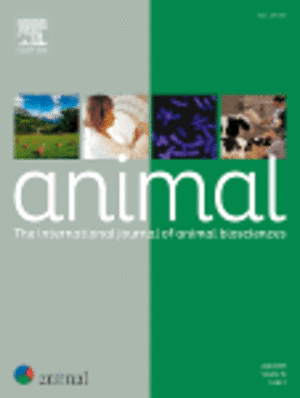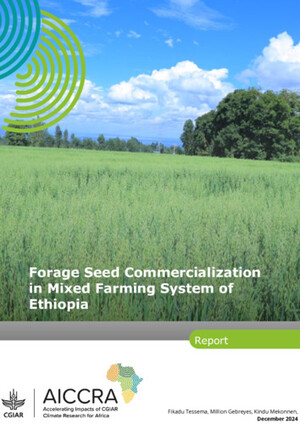
Effect of supplementation of Sesbania sesban on post-weaning growth performance and sexual development of Menz sheep (Ethiopia)
Abstract
Most supplementation experiments with fodder trees including S. sesban have been of short duration and focused mainly on feed intake and growth rate. Long-term studies regarding the effects of feeding S. sesban on reproductive performance of sheep particularly in both sexes are scanty. This study was conducted to investigate the effects of S. sesban on feed intake, post-weaning growth rate, and onset of puberty of male and female lambs. Sixty weaned female and 60 male Ethiopian highland sheep in weight and age ranging between 7.2 and 11.8 kg and 4 and 5 months respectively were evaluated for a period of 9 months supplemented with three levels of S. sesban (0, 47.5 and 95% of supplementary protein provided by S. sesban and the rest being provided by a mix of concentrates). Between sex groups male sheep, and among treatments animals fed with 47.5 and 95% Sesbania in the supplement had significantly (P < 0.05) higher basal feed, supplement, and total feed intake than those supplemented with concentrate alone. Supplementation with Sesbania resulted in significantly (P < 0.05) higher DM, OM and N digestibility than supplementation with sole concentrates. Supplementation with 95% Sesbania elicited higher daily weight gain than supplementation with 47.5% Sesbania and sole concentrates over the growth period. The onset of puberty was at 265 (± 36) and 342 (± 45) days of age and puberty weight was 15.2 and 14.6 kg for ram and ewe-lambs respectively. Ram-lambs fed with 47.5% and 95% Sesbania in the supplement reached puberty by 34 and 21 days earlier and were 1.4 kg heavier (P < 0.05) than those fed concentrates. Ewe-lambs supplemented with 47.5 and 95% Sesbania were faster (P < 0.05) to attain puberty by 43 and 37 days than those supplemented with sole concentrates. The average scrotum circumference gain (SCF) until the onset of puberty was 0.5 (± 0.1) mm− d. Supplementation with Sesbania improved SCF gain but was not statistically significant (P > 0.05) among treatments. Mean P4 (progesterone) concentrations during the first behavioural oestrus ranged from non-detectable levels to a peak of 4.32 ng/ml at mid-cycle without significant difference (P > 0.05) among treatments. Therefore, it can be concluded that inclusion of S. sesban as a supplement up to 30% of the ration improved feed intake, growth rate, onset of puberty and sexual development of male and female sheep without adverse effects.
Citation
Mekoya, A.; Oosting, S.J.; Fernandez-Rivera, S.; Tamming, S.; Tegegn, A.; Zijpp, A.J. van der. 2009. Effect of supplementation of Sesbania sesban on post-weaning growth performance and sexual development of Menz sheep (Ethiopia). Livestock Science. 121(1): 108-116.










